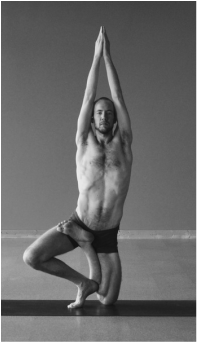|
This is quoted from Gregor Maehle's site Chintamani Yoga. A great site.
"There is a widespread misconception that postures should be painful. As a rule of thumb, postures should not be painful, which is something that even the ancient masters pointed out. Patanjali states in Yoga Sutra, “heyam duhkham anagatam,” which means that new suffering needs to be avoided (Yoga Sutra II.16). The reasoning behind this injunction is simple. Every experience you have forms a subconscious imprint (samskara). Every subconscious imprint, whatever its content, calls for its own repetition." "Practitioners should analyze the postures and continually correct their performance of them until awareness is spread all over the body. When that happens, the body is hardly felt anymore. This sounds paradoxical, but you feel the body mainly when something is wrong. The absence of negative feedback means that everything is okay. When the body is correctly aligned, a feeling of stillness and firmness yet vibrant lightness arises. The mind becomes luminous, still, and free from ambition and egoic tendencies. This is the state that you are looking for. It is conducive to meditation. When this quality is achieved in a posture, that posture is fit as a platform for the higher limbs of yoga." Read the whole article here.
0 Comments
Leave a Reply. |
This journal honors my ongoing experience with the practice, study and teaching of yoga.
My FavoritesPopular Posts1) Sridaiva Yoga: Good Intention But Imbalanced
2) Understanding Chair Posture 2) Why I Don't Use Sanskrit or Say Namaste 3) The Meaningless Drudgery of Physical Yoga 5) Beyond Bikram: Why This Is a Great Time For Ghosh Yoga Categories
All
Archives
November 2017
|


 RSS Feed
RSS Feed